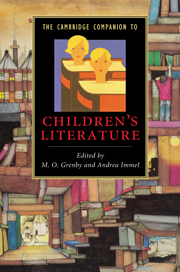Book contents
14 - Fantasy’s alternative geography for children
from Part III - Forms and Themes
Published online by Cambridge University Press: 28 November 2010
Summary
In The Impulse of Fantasy Literature (1983), Colin Manlove arranged fantasies according to their divided topographies. Whereas some fantastic narratives may describe a journey from our world to a supernatural one, he wrote, others, like William Morris' romances, Tolkien's The Hobbit and Ursula Le Guin's Earthsea trilogy, immediately plunge us into a wholly fantastic world with little reference to our own reality. Still others, Manlove noted, may try to harmonise orders that are considered to be separate only in the minds of their readers, or, quite to the contrary, hint that magic and miracle are so rare that they can only become manifest to 'certain types of people'. Though helpful, this topography overlooks the persistent presence of the child as a special 'type' in fantastic landscapes. Indeed, with their special perspective, where neither innocence and experience nor the real and imaginary have drifted into opposition, children are prime players as characters in, and creators and readers of, fantasy texts.
In its focus on the figure of the child, this chapter will offer a parallel perspective on Manlove's taxonomy. In 'Dubious binaries', we question the pervasive opposition between fantasy and reason, as well as a concomitant tendency to designate fantasy texts as being exclusively for either children or adults.
- Type
- Chapter
- Information
- The Cambridge Companion to Children's Literature , pp. 226 - 241Publisher: Cambridge University PressPrint publication year: 2009
- 4
- Cited by

